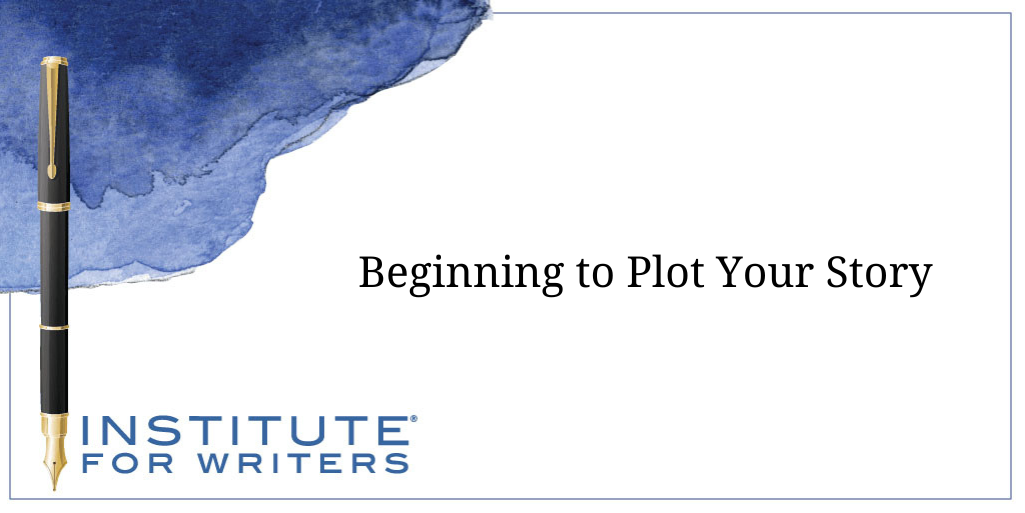
Back to School: Lifelong Learning is Where It’s At
Opportunities for lifelong learning about writing are abundant and during this back-to-school season it is easy to get inspired.

It is June already—halfway through the year. For many of us, the beginning weeks of June mean that it is time to reassess the writing goals we created six months ago. Take some time and see where you are with those writing plans and, of course, it is not a problem if you don’t remember your goals or where you noted them or if you just kept them in your head and never wrote them down—or didn’t come up with any in the first place. You still have half a year to go so take a few minutes to jot down some good and attainable goals now for your writing. 
Your plans for the six months ahead may be to sit down for a certain duration of time each day, come up with a particular number of words each day, or to somehow make progress on a story or article draft you are working on. Whatever you hope for your writing within the next six months, help yourself make solid progress by setting some sort of daily, weekly, or monthly goal. Refer to it often as a way to ensure you will get where you want to be by the end of this year. It certainly seems to be zipping by.
One goal here for June is to discuss plot—building a strong one. We writers know that plot is the chain of events within the tale—it is the story’s plan. Plot is the way the story unfolds and most of us know that it is made up of exposition, rising action, climax, falling action, and the resolution. Just reading those words reminds us that creating an interesting plot that will keep readers interested is no easy task. But coming up with a good plot will make the actual writing much less of a challenge, since you will know where the narrative should generally unfold and how the story will turn out.
There are many ways to go about creating a plot and writers have their own ideas about what works best for their own story creation. One way—and perhaps the most efficient – is to simply create an outline stating the beginning of the story, the middle, and the end. This sounds overly simplified but if you have an idea of how your story will start and end, and then what will occur as that end draws near, you have an excellent backbone for your writing.
The main character’s conflict should be noted within the beginning parts of the outline as well as what they want within the story. These ideas may not come to life for a bit of time as you are writing but should be in the outline, so you continue to think about them.
Once you have those essentials figured out, go back to the outline and be a bit more descriptive with how the story will unfold. Add sentences and phrases that will aid you as you write and experiment with the order of events to inject additional intrigue or interest into the story. You may know from firsthand experience that Hallmark movies are made up of a predictable plot, but it works. This is not true of a story or book though—readers need to find an original spin or new take on the events, something somehow unpredictable or otherwise interesting and unique.
 To further simplify the complicated process of plotting your story: think about your main character and get to know them well. Many writers will write a short biography of that person, with their likes, dislikes, possible quirks, and other random information that can be referred back to as they write. The main character leads the story so they must be as familiar to the writer as a friend or family member.
To further simplify the complicated process of plotting your story: think about your main character and get to know them well. Many writers will write a short biography of that person, with their likes, dislikes, possible quirks, and other random information that can be referred back to as they write. The main character leads the story so they must be as familiar to the writer as a friend or family member.
Then think about the conflict—what is stopping the main character from getting what they want right away. This information will usually unfold as the story moves along, step-by-step as the main character strives to achieve whatever it is they are after. Inject potential roadblocks along the way and jot down how eventually the essential parts of the story will come to a head. Note how the conflict will be resolved and keep in mind that readers must believe it, be satisfied, and be thinking later about a bit about what they have just read.
In a recent podcast to promote his latest book, Camino Ghosts, John Grisham said he randomly wrote scenes for the book and then eventually strung them together and figured out whether their order would make sense. This sounds like an interesting way to create the narrative. Other writers spend lots of time writing the above-mentioned outline, adding detail and then thinking about ways to present the book’s ending. They will revise parts of the plot within the outline and then begin to write. 
Unless you have your own method that works, the best way to create a plot may be to come up with your manuscript’s summarized idea even if it is somewhat simplified. Then begin the outlining process.
After you have written the story—or while you are knee-deep in it—you may end up deciding that an alternate timeline could work best. You may have started with a straight chronological path to telling the story but could consider revising to dual timelines or other methods as the story unveils itself. You may want to present an alternate scene at the start of the story. Before making those types of revisions, ensure you have a draft completed. If not, you can get bogged down with changing parts of the story and never get the manuscript completed—a common problem for many writers.
The next June blog post will discuss general problems with creating a story’s plot. Note that no writer can easily come up with a good plot that works without many hours of thought, planning, and frustration. Continue to read novels constantly, especially of the type that you like to write and from the authors you most admire. You won’t want to write exactly like them (and would never be able to anyway) but these published and successful writers can be thought of as writing instructors as you work on your own manuscripts.
Susan Ludwig, MEd has been an instructor with the Institute of Children’s Literature for almost twenty years. Susan’s writing credits include teacher resource guides, English language learner books, and classroom curriculum for elementary through high school students. A former magazine editor, she assesses students’ written essays as a scoring director for the ACT and SAT exam. When she is not writing or working, she is usually found playing with her grandsons or curled up with a good book.

Opportunities for lifelong learning about writing are abundant and during this back-to-school season it is easy to get inspired.

As you seek to create characters, you will also want to work to strengthen the interiority of those you are writing about.

Character development is an interesting part of writing but may be among the most time consuming and significant in your story.
1000 N. West Street #1200, Wilmington, DE 19801
© 2024 Direct Learning Systems, Inc. All rights reserved.
1000 N. West Street #1200, Wilmington, DE 19801
© 2025 Direct Learning Systems, Inc. All rights reserved.
1000 N. West Street #1200, Wilmington, DE 19801
©2025 Direct Learning Systems, Inc. All rights reserved. Privacy Policy.